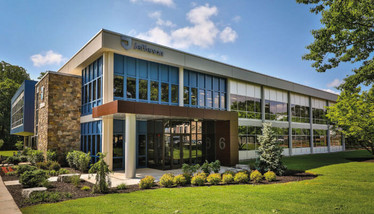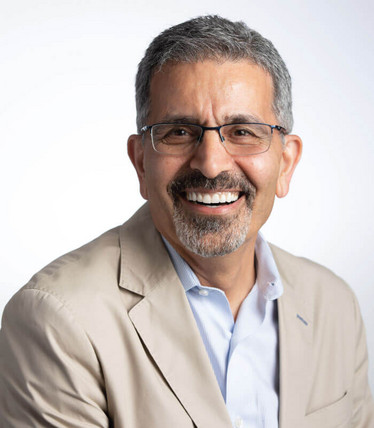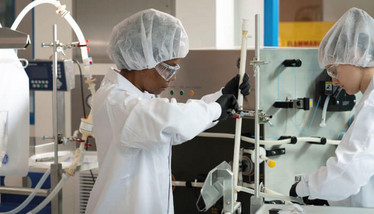
Innovation in Biopharma Education
The Jefferson Institute for Bioprocessing is up and running after just two years. How did they do it? What courses are on offer? And how do its leaders see biopharma training developing in the coming years?

It was Saint Patrick’s Day 2016 when J&J’s Mary Lynne Bercik was listening to Dominic Carolan, CEO of Ireland’s National Institute of Bioprocessing Research and Training (NIBRT) at DCAT in New York City. Carolan was explaining NIBRT’s approach to training the biopharmaceutical workforce of the future. NIBRT is a fully functional pilot manufacturing facility dedicated to training and research (see sidebar, “Who or what is NIBRT?”). Bercik, who had graduated from Thomas Jefferson University’s business school, wondered whether it might be possible to mirror NIBRT’s efforts in the US – the “spark” that ultimately led to the Jefferson Institute for Bioprocessing (JIB), which is now up and running just years two since the collaboration was first announced in 2017.
The JIB delivers NIBRTs curriculum in Philadelphia. And, like NIBRT, it is open to industry professionals who want to take part in workshops and courses, as well as graduate and undergraduate students in bioprocess engineering – one difference is that Jefferson, being a university, can incorporate courses into its degree programs.
Following our coverage of the Jefferson-NIBRT collaboration last year (1), we speak once again to Ron Kander, Executive Dean of Jefferson’s Kanbar College of Design, Engineering and Commerce, and to the new Executive Director and Head of the Jefferson Institute for Bioprocessing, Parviz Shamlou, to find out how the institute launched so quickly – and their plans are for the future.
How does the Jefferson Institute for Bioprocessing fit into the new vision for the university?

Ron Kander, Executive Dean of Jefferson’s Kanbar College of Design, Engineering and Commerce.
Kander: Our provost came up with the concept of a “professional Ivy League university.” Harvard, Yale, and the other Ivy League universities work synergistically to deliver elite, high quality liberal arts education. We want to create something similar for professional universities. World leaders often come from the Ivy League, but what if we had the same thing for law, business or manufacturing? We want the leaders in those professions to come from an Elite Professional Ivy League, like Jefferson.
We believe we’re in a great position to deliver on that concept; the two schools that make up the new Jefferson University (Thomas Jefferson University and Philadelphia University) have always had a strong focus on professional degrees. The Institute part of this larger vision. Our aim is to educate the leaders in international biomanufacturing through hands-on training.
Why is the “hands-on” aspect so important?
Kander: In the American system, there are only three ways to survive as a university right now. The first is size. We’re seeing a lot of small schools closing, but the largest universities are not going away. The second factor is endowment. They might not be huge schools, but the Harvards of the world aren’t going away either. The third route, the one we have taken, is to focus on value for money – and that means value for employers. Many schools have a hard time demonstrating that college is worth it from a return-on-investment point of view. Students are asking themselves, is it worth paying upwards of $40,000 per year to go to university? There needs to be the promise of a high-quality career at the end – not just a job. By focusing on the kinds of practical skills that employers are increasingly looking for, we’re able to place 97 percent of our students in a job or graduate school in their discipline.
And you’re also serving a local industry...

Parviz Shamlou, Executive Director and Head of the Jefferson Institute for Bioprocessing.
Kander: Exactly. Philadelphia is one of the focal points of the biopharmaceutical industry in the US. If you look at biopharmaceutical processing firms and their suppliers, there are hundreds of companies within a two or three hour drive of Philadelphia. Part of our job as a university is regionally supporting the local economy through workforce development structure.
Biopharma is unique in that there’s a workforce development deficit across the entire spectrum of roles – from two year associate’s degree technicians, to PhDs leading the organization. There are lifelong opportunities for people in this field and it is changing all the time – retraining is key.
Shamlou: Ron is right, training is, and will continue to be, hugely important for the biopharma industry. And not just any old training. If someone is going to work in a biopharmaceutical facility, they will need a set of highly specific, technical skills. Make a mistake in a GMP facility and the consequences could be quite significant for a company. Indeed, companies are reporting that it can takes years to train someone so that they can be trusted.
Our approach is to provide an environment that closely replicates a real GMP facility, where mistakes can be made. So when they do go into a company, they will know exactly what to do. And it isn’t just how to operate the equipment – it’s quality, cleaning, validation, documentation and other skills that make biopharmaceutical roles so specialized and highly skilled.
Kander: At Jefferson, we use the acronym KSA, which means knowledge, skills and attitudes. Applied universities are often good at knowledge and skills, but what makes our facility (along with NIBRT’s) so different is that we are also able to develop the attitude component. The industry will tell you that the right attitude is possibly the most important element to successfully working in a GMP environment or as part of a supply chain with a patient at the end of it.
How did you get the Institute up and running so quickly?
Kander: A big factor was that the university was already very industry facing. We were able to reach out to companies and get industry partners onboard from the beginning as part of our advisory board. It was relatively straightforward from there to justify to the university why the Institute would be something of value for the region.
But this outreach and partnering wasn’t something we could do by ourselves, so we hired a project management firm and contractors who knew how to do the work. We also had NIBRT as a partner who had been there and done it – they knew where the pitfalls were and their advice was invaluable. Overall, we surrounded ourselves with people who knew how to make this happen!
Shamlou: Another key factor in our time to launch was the focus on next-generation biomanufacturing technologies. If we had opted for a traditional, stainless-steel facility, it would have taken us at least three to four years to get up and running. The facility uses single-use equipment, so nothing is bolted down. This flexibility significantly reduced the time and cost involved. This decision was made based on our conversations with NIBRT – which has both single-use and stainless steel at its facility – and they advised us, as an academic institution, to prioritize single use.

What were the main challenges?
Kander: The facility is an unusual hybrid between an academic institution and a business unit, so the staff working here have to figure things out for the first time, which is a big challenge. We’ve had to build a team of people that are comfortable with ambiguity – this isn’t the sort of place where your job is clearly defined! A major challenge was deciding which parts of an actual manufacturing facility we needed to replicate and which we could ignore. This created a lot of ambiguity at the construction phase with trade-offs between real-to-life and cost/time.
Shamlou: Exactly. We want to be nimble and responsive to the needs of the industry, while at the same time being conscious of the fact that we’re an academic institution at heart. It’s an innovation in education itself – one that we think will catch on.
How did NIBRT help?
Kander: The many small snippets of wisdom provided by NIBRT were significant over the course of the whole project! One example was that NIBRT put their upstream and downstream processing unit in the same room, which from a manufacturing point of view, made perfect sense – that’s how real facilities are set up. They quickly realized that if you have two groups of students in that room, however, you end up with everyone yelling over each other. They had to stop that. We put the upstream in one room and downstream in another. It might not replicate a real facility exactly but it’s worth it to maximize our space.
Shamlou: In addition to practical tips, collaborating with NIBRT has been invaluable for our credibility. Any new facility needs time to grow and be accepted by the community. NIBRT has been around for over a decade and is accepted as the gold-standard in this space. Through our partnership with NIBRT, people already know that our courses will be of high quality and properly regulated and audited, which should accelerate the credibility-building process for us.
Can you give us an overview of JIB’s courses?
Shamlou: We will provide the same courses as NIBRT, as well as some of our own. We also want to harmonize the way we deliver those courses, so that a company with people in America and Europe could send their staff to Jefferson or NIBRT and they’d both receive the same experience. We’ve been working closely with NIBRT to make this harmonization a reality.
In short, we’re offering courses on everything from API presentation, storage and stability, cell line, inoculation, cell expansion to viral safety, chromatography, buffer exchange concentration operations, nano filtration, freezing and thawing of API – and many more. We also have courses that integrate these individual operations to give an end-to-end overview of the process.
Kander: There’s really two markets for training: people who are going to be operators on a given unit and those who will never work in bioprocessing – people in sales, marketing, business and so on – who still need a good understanding of the overall process so that they know what they’re talking about when dealing with customers or suppliers. We offer both kinds of courses.
Anyone can register for our “open enrollment courses,” which run for two or three days. But we also have “customized courses,” where a company might send 10 to 12 employees and we will deliver training specific to their needs. The company might also choose to bring their own expert to deliver the course at our facility.
In fact, Parviz has had conversations with companies who may want to bring specialized equipment into Jefferson to train their people on how it interfaces with other equipment.
Are the courses also integrated into your degree programs?
Kander: Yes! One big difference between ourselves and NIBRT is that, because we’re a university, we can turn these courses into accredited elements of a degree program – undergraduate and postgraduate. We’re bringing in our first students this academic year.
We’re working with three different colleges, and four or five degree programs within those. So you might be a biochemistry, biotechnology or engineering student, and you would take courses at the institute as part of your degree program. We’re also looking at a post-graduate degree program where a student would do all 30 credits here. And we are open to partnering with other universities in the region.
What are your plans for advanced therapies?
Shamlou: Right now, we have 25,000 square feet of empty space that we’re ready to expand into. If we get approval from leadership – and provided we find the right partners – our vision is to grow out training programs into cell therapy, gene therapy and other up-and-coming areas. Watch this space.
How do you see biopharma training developing in North America?
Kander: Through our agreement with NIBRT, we have exclusive North American rights to their curriculum. So any other facility in North America that tries to implement the same courses would have to come about via partnership. Indeed, we might see satellite organizations popping up elsewhere in North America. I could eventually see NIBRT building a global network with facilities in the Pacific Rim, Africa or elsewhere in Europe, all teaching the same curriculum.
We’re also trying to build a consortium, called NIIMBLE (National Institute for Innovation in Manufacturing Biologics), which is currently made up of 30 or 40 universities and companies, to standardize training. We strongly believe the pie is big enough for everyone and we’re taking a leadership position in helping develop training capabilities across North America.
Shamlou: We see great potential in partnership, as opposed to competition. Jobs in this sector are growing rapidly both nationally in the US and globally, and can’t be filled because there aren’t the training facilities available. What we need, as Ron said, is a network of facilities worldwide, all meeting the same high standards.
Who or What is NIBRT?
NIBRT is a fully functional pilot manufacturing facility dedicated to training and research, based in Dublin, Ireland. Everything is done to GMP standard, but people can make mistakes without costing a company any lost revenue. The biopharma industry sends staff to NIBRT for customized training programs, and students from higher education institutes visit for a hands-on manufacturing experience. The institute opened its doors in June 2011 and trains approximately 4,000 people each year (2).
In 2016, NIBRT received additional grant funding to expand its R&D activities to match it’s training program (3). Its main focus areas are downstream processing, engineering and manufacturing technology for next generation therapeutic platforms.
For example, NIBRT recently announced a collaboration with Allergan to address challenges in Adeno-Associated virus (AAV) production (4). “Given the potential for gene therapy to transform patients’ lives, this collaboration will help progress both the analytics and process which are currently the main challenges in the production of high quality AAV medicines,” said Crawford Brown, SVP Biologics & Small Molecule (API) at Allergan.
- Kathy Gallagher and Ron Kander, “Training the Workforce of the Future” (2018). Available at: bit.ly/30m3Qr7. Last accessed: September 11, 2019.
- Barry Heavey, “A Tale of Irish Biopharma” (2016). Available at: bit.ly/2HcVJFZ. Last accessed: September 11, 2019.
- Killian O’Driscoll, “Sustaining the Biopharma Boom” (2016). Available at: bit.ly/2TQHBHq. Last accessed: September 11, 2019.
- NIBRT, “Allergan and NIBRT announce gene therapy research collaboration” (2019). Available at: bit.ly/2KDr2vu. Last accessed: September 11, 2019.

Over the course of my Biomedical Sciences degree it dawned on me that my goal of becoming a scientist didn’t quite mesh with my lack of affinity for lab work. Thinking on my decision to pursue biology rather than English at age 15 – despite an aptitude for the latter – I realized that science writing was a way to combine what I loved with what I was good at.
From there I set out to gather as much freelancing experience as I could, spending 2 years developing scientific content for International Innovation, before completing an MSc in Science Communication. After gaining invaluable experience in supporting the communications efforts of CERN and IN-PART, I joined Texere – where I am focused on producing consistently engaging, cutting-edge and innovative content for our specialist audiences around the world.



















